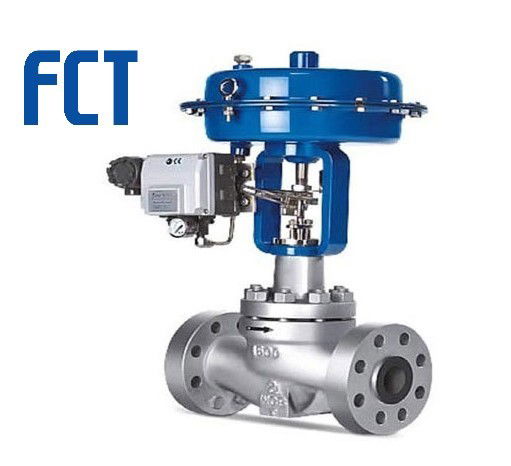How Control Valves Impact Energy Performance in Industrial Settings
How Control Valves Impact Energy Performance in Industrial Settings
Blog Article
Achieve Seamless Combination and Control With Top Quality Building Automation Controls
In the world of contemporary building administration, the relevance of quality structure automation controls can not be overstated. Accepting high quality structure automation controls is not merely a matter of benefit but a calculated important for companies intending to optimize their facilities' efficiency and sustainability.

Advancement of Structure Automation Controls
Throughout the previous couple of years, the advancement of developing automation controls has actually considerably changed the method buildings are handled and run. Developing automation systems primarily focused on basic functions such as managing air, ventilation, and heating conditioning (COOLING AND HEATING) systems. As innovation progressed, these controls have become much more advanced, enabling for a larger variety of structure systems to be integrated and taken care of centrally.
The evolution of building automation controls has actually seen a shift towards even more intelligent systems that can adapt to transforming problems in real-time. This versatility is important for optimizing energy performance and making certain passenger convenience. Furthermore, modern building automation controls now provide features such as predictive upkeep, remote tracking, and information analytics, making it possible for center supervisors to make data-driven choices to enhance structure efficiency.

Benefits of Quality Combination
The development in building automation regulates in the direction of even more intelligent systems has underscored the significant advantages of quality combination in enhancing building operations and boosting general performance. Quality assimilation of developing automation controls offers a number of crucial advantages. Firstly, it leads to enhanced power efficiency by permitting various systems to collaborate perfectly, making certain optimal efficiency and minimizing power waste. High quality combination enhances occupant convenience and performance by enabling customized control over environmental settings like air, lighting, and temperature level top quality. This modification can lead to an extra comfortable and favorable working or living atmosphere. Furthermore, top quality combination streamlines upkeep and repairing processes, as all systems are adjoined and can be checked and managed from a central user interface. This central control likewise offers better visibility and understandings right into structure efficiency, allowing proactive maintenance and optimization approaches. On the whole, the benefits of top quality combination in building automation controls are undeniable, supplying boosted efficiency, convenience, and operational performance.
Boosted User Experience and Accessibility
Enhancing user interaction with structure automation regulates through instinctive layout and enhanced accessibility boosts the overall experience for occupants and center managers alike. By concentrating on customer experience, building automation systems can end up being a lot more efficient and straightforward. User-friendly user interfaces, clear navigation, and customizable settings equip customers to connect with the controls quickly and successfully.
Access functions play a crucial duty in ensuring that all people, including those with specials needs, can utilize the structure automation manages effortlessly. Including features such as voice commands, responsive buttons, and color-contrasted screens can improve ease of access and make the controls extra inclusive.
Moreover, enhanced individual experience results in greater user contentment, boosted productivity, and better decision-making. Passengers can change environmental setups according to their choices, while facility supervisors can efficiently check and manage structure systems - control valves. In general, prioritizing individual experience and ease of access in building automation manages adds to a more efficient and seamless building setting for all stakeholders included
Sustainable Practices Via Automation

Additionally, automation can facilitate the integration of eco-friendly power sources such as solar panels or wind generators right into building operations. Through automation, structures can align with modern-day sustainability objectives and add to a greener future.
Future Trends in Structure Control Solution
In expectancy of advancing modern technologies and developing sustainability practices, the trajectory of structure control systems is poised to accept transformative methods and innovative remedies. One prominent fad forming the future of structure control systems is the raised combination of Artificial Knowledge (AI) and machine understanding. These technologies allow buildings to adjust in real-time to altering conditions, maximizing power usage and boosting convenience for owners. Additionally, the Internet of Points (IoT) is transforming structure control systems by attaching sensing units and devices to simplify procedures and enhance view publisher site efficiency.
Another crucial pattern is the emphasis find more info on cybersecurity actions to shield against prospective dangers to building automation systems. As structures end up being extra interconnected, ensuring durable cybersecurity protocols will certainly be necessary to protect delicate data and protect against unapproved accessibility.
In addition, the change in the direction of cloud-based platforms is getting momentum, permitting systematized control and remote accessibility to structure systems. This promotes much easier tracking, maintenance, and updates, enhancing the total efficiency and adaptability of building control systems. As innovation continues to development, these fads are anticipated to form the future landscape of building automation controls, driving development and sustainability in the developed environment.
Final Thought
Future fads in structure control systems are most likely to focus on additional enhancing automation capacities for improved energy effectiveness and overall performance. It is vital for structure proprietors and operators to prioritize the adoption of quality building automation controls to optimize building operations and accomplish lasting sustainability objectives.
In the realm of contemporary building management, the importance of quality building automation controls can not be overstated. On the whole, the advancement of building automation controls proceeds to drive innovation in the building management industry, offering new possibilities for developing smarter and more sustainable buildings.
The development in structure automation controls towards even more smart systems has emphasized the substantial benefits of quality integration in enhancing building procedures and boosting general effectiveness. click this Generally, focusing on individual experience and accessibility in structure automation manages contributes to an extra seamless and effective structure setting for all stakeholders involved.
It is crucial for building owners and operators to prioritize the adoption of high quality structure automation controls to maximize structure procedures and achieve long-term sustainability objectives. - control valves
Report this page